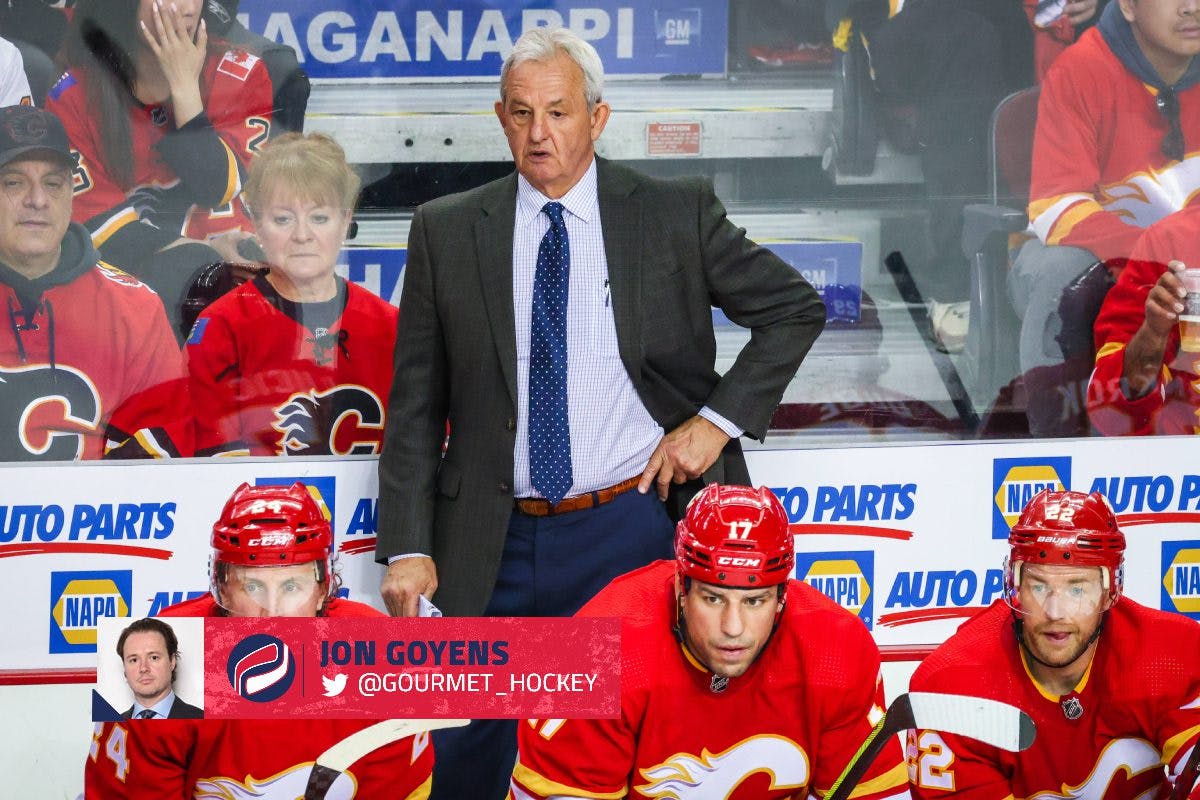Matchup Game: Why line changes are more important than line matching

The matchup game is always one of the biggest talking points at the start of every Stanley Cup playoff series. Prognosticators breathlessly talk about which line will match up with whom, or coaches efforting to get this defensive pair out on the ice frequently against this player.
The matchup game can be real – depending on the philosophy of the two coaches going head-to-head.
It can also be overblown, as it isn’t always effective, and some coaches appear to get so wrapped up in what the opponent is doing that they lose sight of their own team’s strengths in trying to religiously match lines.
🏒 @gourmet_hockey joined @frank_seravalli & @MLarkinHockey on The Daily Faceoff Show today!
One topic he talked about was line changes and the importance around them.
Pres. by @DoorDash#DFODoorDash https://t.co/yAC1Fq3pMD pic.twitter.com/sOkDPuWe85
One other trend we’ve seen in recent playoffs is teams that throw their third or fourth line out to start a game. Think the “identity lines” of maybe the Islanders (Matt Martin – Casey Cizikas – Cal Clutterbuck) or last year it was the Tampa Bay trio (Barclay Goodrow – Yanni Gourde – Blake Coleman) that helped drive their success.
Why do coaches do that?
The answer is they want their team to impose their will first and set the tone most quickly.
All teams pre-scout and pass along the information to players. There are no surprises. And actually, the awareness of who is on the ice might force some players to get off too early at times.
The matchup game can be important. But to be honest, my belief is clean line changes are more critical to team success than matching lines. Here are seven reasons why:
1. Last Change
Home teams have the ability to change last during stoppages. It’s the advantage to them, every time, if they want to get their first line on the ice against the other team’s fourth line.
2. Speed
The game is way too fast. For this reason, trying to match up a particular defensive pair is usually an easier task than matching forward lines.
3. Icing Choices
The icing rule prohibits a team that has iced the puck to change. That gives the offensive team the choice of a fresh, five-man group they can even decide which side of the ice they want the faceoff on to drop the puck. There is strategy to both parts of it. (Changing players would also give the defensive team a chance to rest, theoretically negating the penal part of the icing.)
4. Rhythm and Flow
If dedicated to strict matchups, a team can allow their opponent to dictate the rhythm and the frequency their top players get on the ice. In that case, if the team being matched feels like they have an advantage – or they are able to consistently create one with their players on the ice – that puts the strict matchup team at risk of changing it up or abandoning their game plan.
5. Long Changes
During the second period (and overtime), line changes are more difficult to complete. The bench is further away. Getting stuck with tired players on the ice can lead to desperate sprints to the bench and difficult decisions. Go back to Game 6 of the New York versus Pittsburgh series for the incredible stretch pass made by Igor Shesterkin on the power play, catching the Penguins making a bad change.
6. Proper Puck Placement
The rule to a successful line change is to place it in the bench-side corner, which should hopefully interrupt a quick pass up the ice by the opposing team. That puts the new players on the ice in a position to success and should allow for better overall puck management. Take a look at the Game 6 winning goal by Tyson Barrie. The Kings’ forward turns the puck over as his teammates are changing. Instead of backchecking, he changes as well and Barrie beat the fresh players to an open space.
7. Angle of Attack
Lastly, the importance of how players jump on the ice and get inside the dots – or the middle of the ice – first is absolutely critical. This helps to angle out the rush against, or backcheck and get right to the ‘house’ or slot first on the defensive end. Starting off inside the dots offensively can also allow that player to join the play in a sneaky fashion – almost out of sight, out of mind.
____
Former QMJHL head coach Jon Goyens has 28 years of coaching experience, from the lowest levels of minor hockey all the way to serving as a special consultant for an NHL team during the Stanley Cup playoffs. He is the winningest coach in the history of the Quebec Midget ‘AAA’ league with the Lac St. Louis Lions and has helped develop 25-plus players to be selected in the NHL Draft. He has also worked as an individual skills and development coach with future Hockey Hall of Famer Hilary Knight, as well as NHL players such as Jonathan Drouin and Mike Matheson.